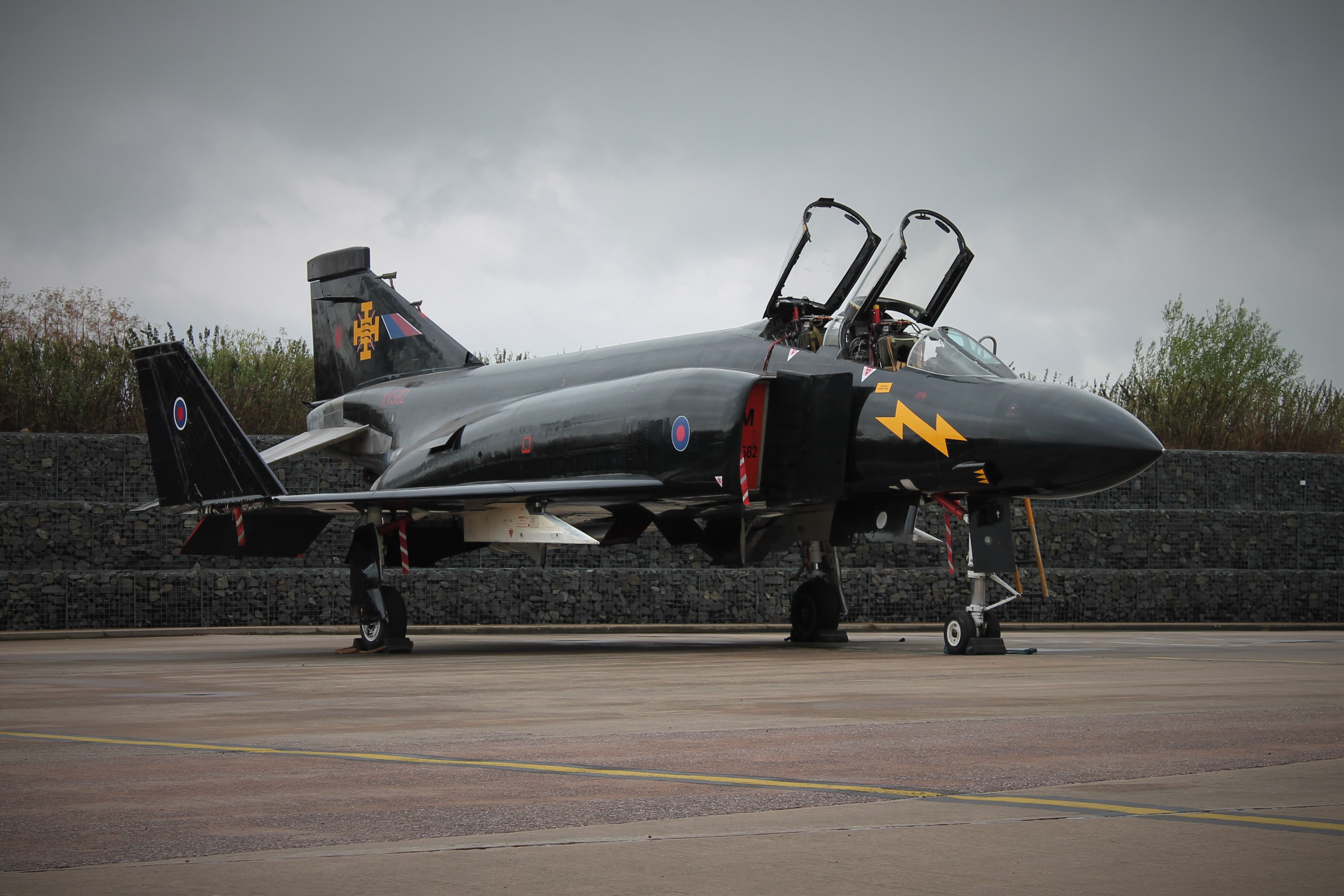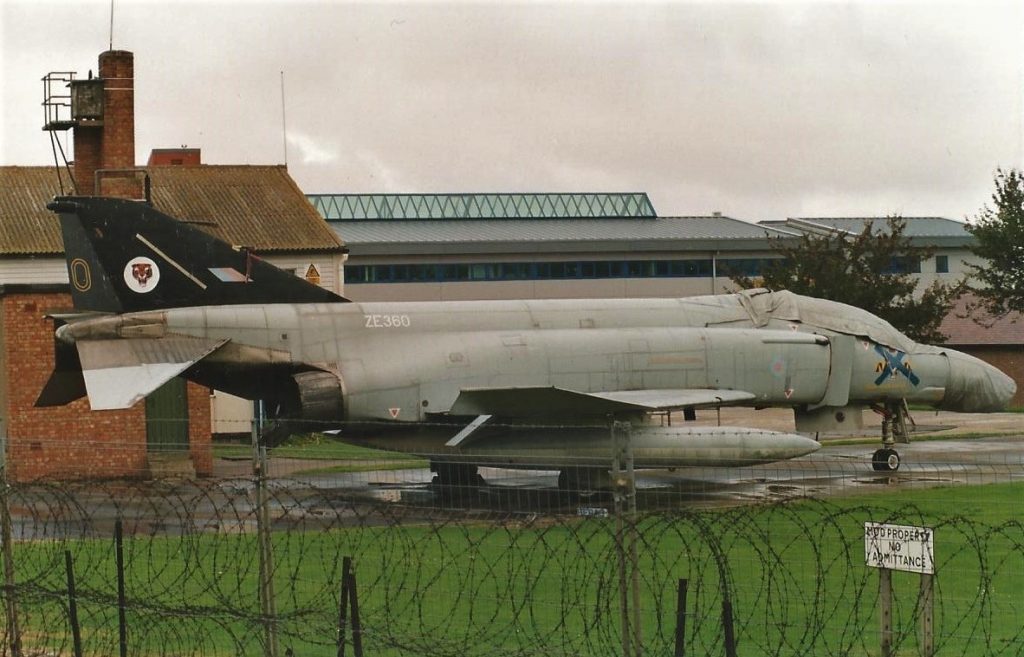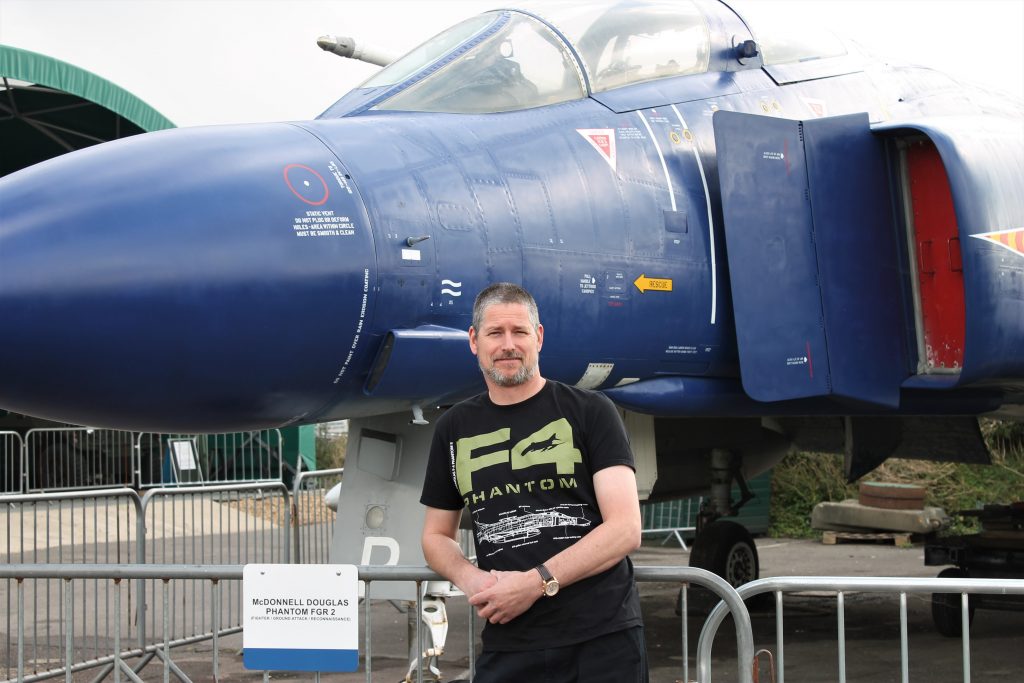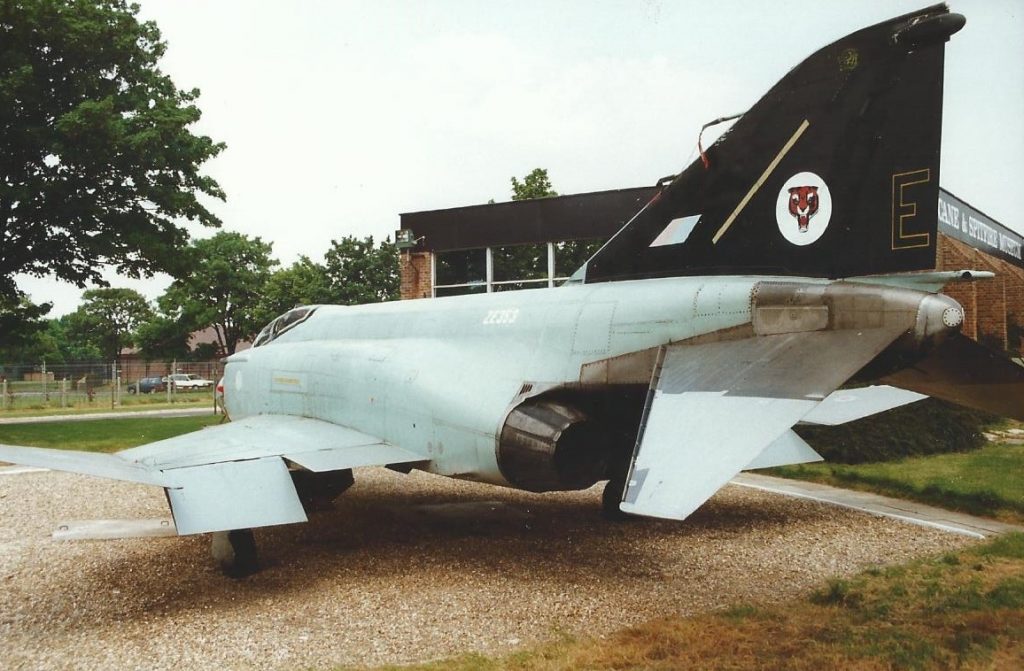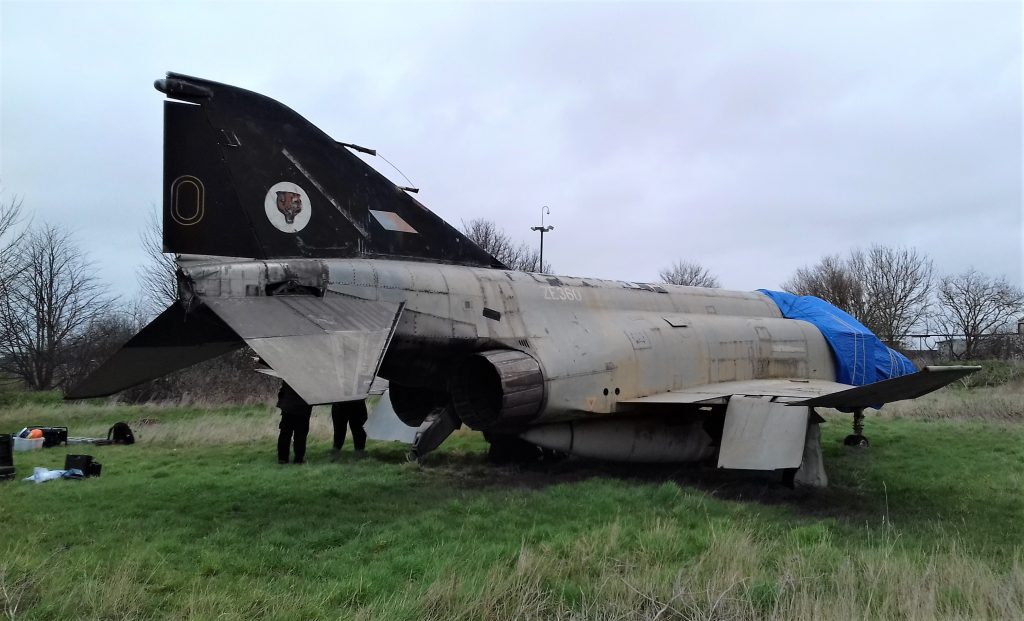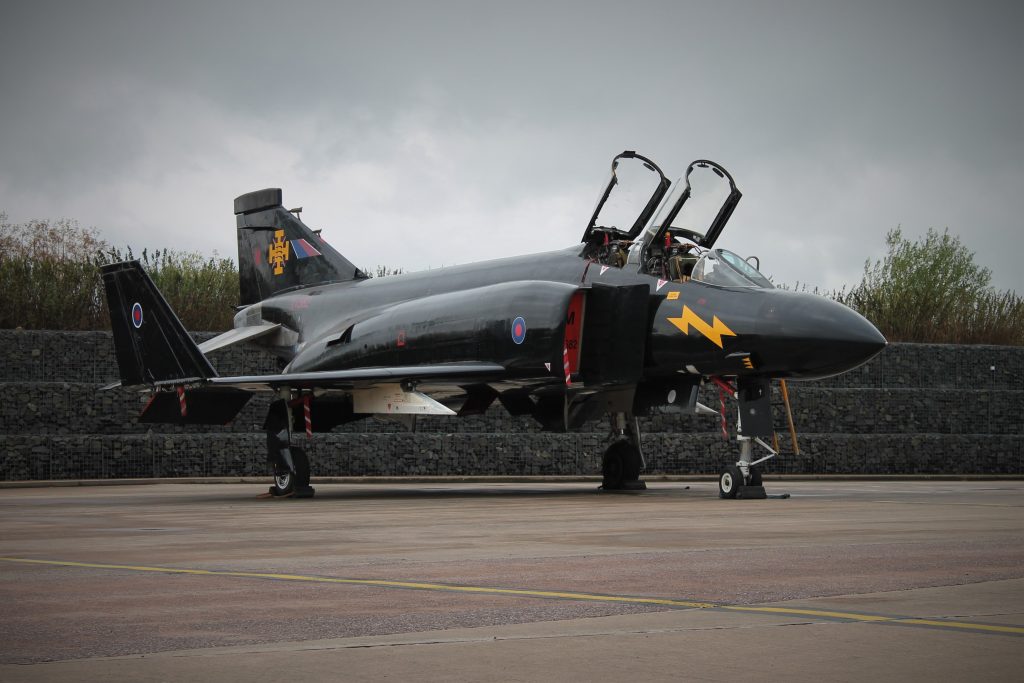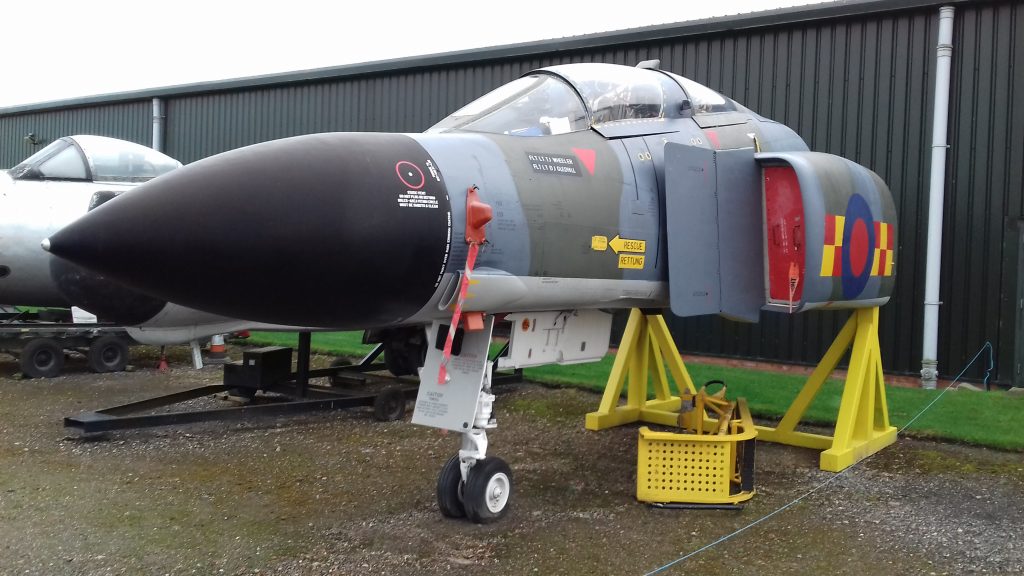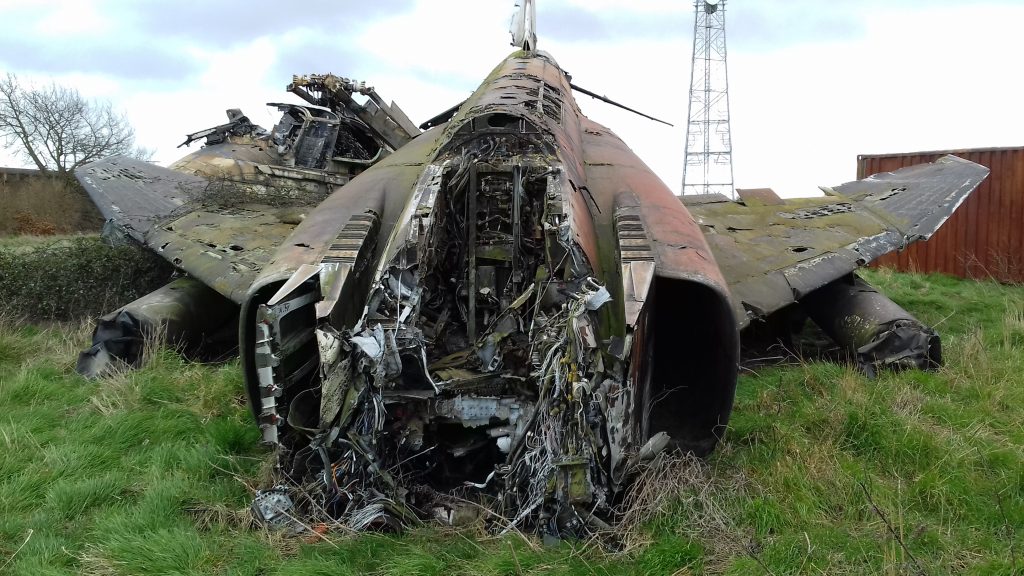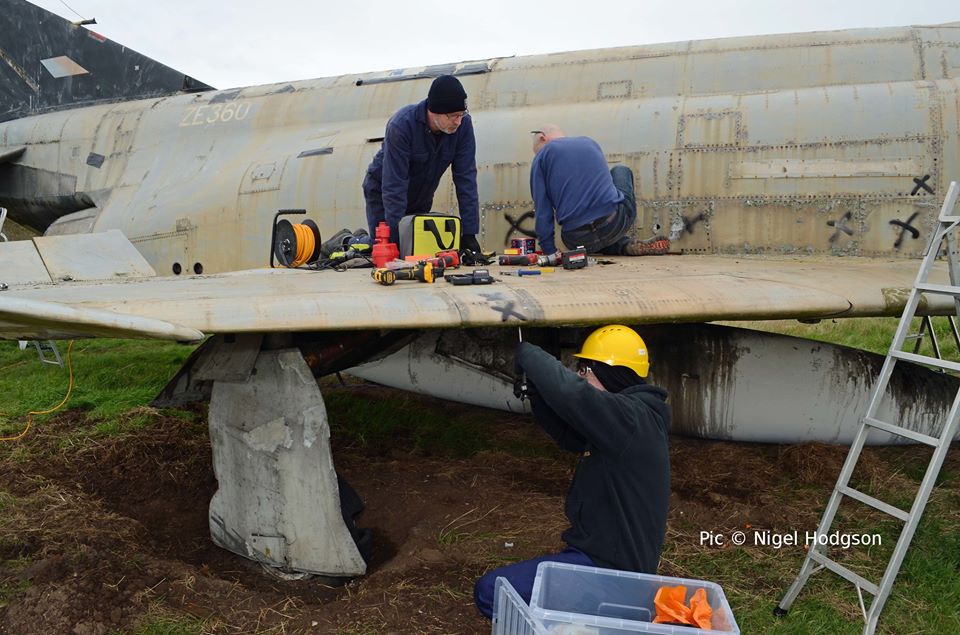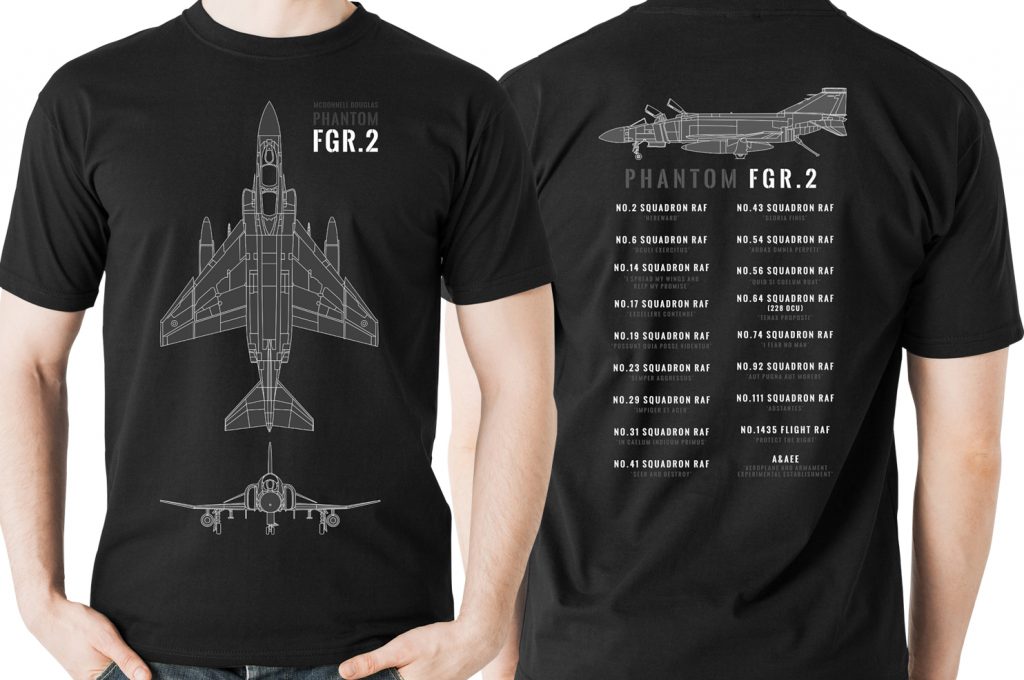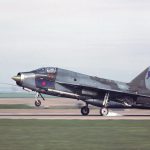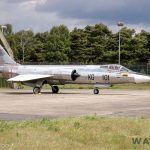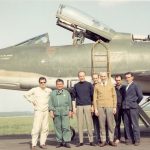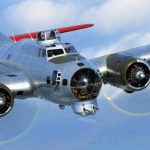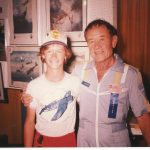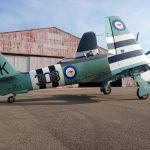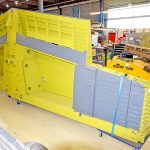Your Stories is a collection of memories we have received from our readers and adapted as articles to share on this website. If you are interested in sharing your own memories or stories with us, please contact us HERE
The scene in front of me is one of devastation. The tortured, twisted and charred remains of once mighty, frontline combat aircraft lay before me. It’s enough to bring a tear to the eye of any aviation enthusiast, but the only thing bringing a tear to my eyes this Saturday morning, is a biting wind, blowing in off the English Channel.
I curse as, once again, another drill bit goes blunt. These cobalt drills aren’t cheap and it means I’m going to have to spend my entire lunch break on Monday sharpening the damn things. I lean back against the fuselage and chuckle to myself. I’m not really annoyed, in fact I feel the complete opposite. At that moment, I’m the luckiest person alive. I’m sitting on the wing of my favorite airplane, and I’m doing my best to help save it from the same fate as the wreckage that surrounds me. I’m at the Defence Fire Training School at the former RAF station, Manston, Kent, and I’m sitting on the wing of an F-4 Phantom. Not just any Phantom, this one is a Tiger and his name is Oscar.
So how did I get to be such an avgeek, and a massive fan of the Phantom in particular? If you would be so kind as to read on, I will endeavor to explain.
I was born in 1971, and grew up in the small village of Godmersham, about seven miles south of Canterbury in Kent. My father was a gardener at Godmersham Park, a huge mansion, set within 1500 acres of farmland. We lived in a cottage on the edge of the mansion grounds and neither of my parents could drive, so my entire world growing up was that 1500 acres.
At some point at a very early age, I must have looked up at the sky. Living in the south east, there were always plenty of airliners flying overhead. With a few Cessnas and other light aircraft coming by, I would marvel at how these things stayed in the air and what seemed like their boundless freedom as they disappeared over the horizon, travelling to a world unknown to me. The seed was sown.
I must have been about 9 years old when I made the decision that I wanted to be a pilot when I grew up. I suitably decorated my bedroom with airplane posters and devoured every book and magazine about aviation that I could lay my hands on. My bedroom ceiling was the busiest piece of airspace in the entire world, with all the airfix kits that I had made hanging there. Realizing that this was no passing fad, my father took me, on what seemed like an endless coach journey, to my first airshow at Farnborough in 1982. I don’t remember much about the show, other than a C-130 Hercules doing a very short landing, depositing a Land Rover next to the runway, and then taking off very quickly, which I thought was pretty cool. I also remember the Harrier being fantastically noisy which, of course, I loved and I thought Harriers might be the airplane for me.
It was about this time that I became aware that living where I did was no bad thing. A large country house in the middle of nowhere must be a marvelous navigational tool for a military aircraft. We seemed to have an endless procession of airplanes passing through at low level. Jaguars, Tornados, Harriers and the occasional Buccaneer, Hercules, Chinook and Puma. Not forgetting the bright yellow SAR Wessex and later Sea Kings from our ‘local’ E Flight of 202 Squadron at RAF Manston. The Yanks would often pay us a visit too, with their F-111s and A-10s. It was no wonder that I had caught the aviation bug.
Around 1984/85, I was to witness something that was to focus my love for aviation in one direction. I was out walking in the shallow valley that the Stour river makes next to where I lived. After these years of watching low level jets come screaming through, I had seemed to develop a sixth sense as to when one was approaching. I was making my way towards a small wood, which blocked my forward view. The hairs on the back of my neck suddenly stood on end and I instinctively looked out to my left. There, about two miles away, I briefly saw an F-111 in a hard right hand turn before it disappeared from view over the horizon. In that instant, slightly to my right, appeared another F-111 from over the wood. It was at about 250 feet in a hard left hand turn and that also quickly disappeared from my view. My mind was racing, I had the impression that the F-111s were running away. Why else would they break in opposite directions like that? What could possibly scare those super fast fighter bombers to the point that they were running for their lives? These questions raced through my mind in a heartbeat.
The answer then burst into view, a relentless hunter with the sniff of a kill in its nostrils. At less than 500 feet right above me, full afterburner tearing the air apart with a howling scream. Then it was gone, quicker than the blink of an eye. A picture had imprinted itself on my mind as I stood there physically shaking. A Phantom! An FGR2 I think. I start heading for home. What were those markings? Maybe 29 Squadron, or am I thinking that because there’s a poster on my wall of a 29 Squadron Phantom. As I reach home, I burst through the door and breathlessly declare, “I want to fly Phantoms!”.
From that moment on I became a ‘Phanatic’ and my love for the F-4 has grown unabated ever since. Every airshow I went to, I would grab a program as soon as I arrived in the hope that a Phantom would be part of the display. Remember, this was pre internet, so you never knew what would be there. I just couldn’t get enough of Phantoms. Dreams of flying Phantoms swirled through my teenage mind. Which squadron would I like to fly with, not that I’d have that choice. 43 or 111 Squadron? Nah! I don’t fancy Scotland, too cold in the winter. 19 or 92 on ‘Battle Flight’ in Germany would be pretty cool…., but they wouldn’t be Top Gun cool! Have you seen those guys on 74 Squadron with the ex US Navy F-4J(UK)? Those guys are super cool in their American flight gear. 74 Squadron and the F-4J(UK) it is then.
The end of the cold war and the resulting ‘Options For Change’ of 1990 meant that the F-4 would no longer be in service after 1992. My dreams of flying the mighty Phantom came crashing down. I still wanted to be a fast jet pilot though, so, in April 1991, I duly arrive at the Officer and Aircrew Selection Centre at RAF Biggin Hill. I had visited Biggin many times to attend the annual airshows, but never had I been on this side of the airfield. My confidence was high even though I knew this was going to be one of my toughest challenges yet. This was to be the start of what I thought would be an exciting flying career in the RAF.
Well, to cut a not very long story even shorter, my medical history caught up with me. Having gone through the myriad aptitude tests, medical tests and the most stress filled interviews imaginable, I’m eventually offered NCO aircrew. Not my first choice, but I’ll take it. However, I am then called to see the Chief Medical Officer, who informs me that, because I suffer from migraine headaches, I cannot be accepted into any aircrew position. “Sorry, old chap. Close the door behind you.” And there ended my glittering RAF career.
I must admit, I threw my toys out of the pram at this time. What was I going to do now, I had no backup plan. At that time, I didn’t want anything to do with aviation. I threw myself into my other passion, motorsport. With the help of friends, I race prepped a mini, and started racing. This occupied my spare time, but there was always something niggling in the back of mind. I always looked to the sky every time something flew over. Airplanes were in my blood. I started attending airshows again and was fortunate enough to see the Phantom in its ‘Phinal’ year with the RAF. It was a 74 Squadron jet too, although an FGR2 and not an F-4J(UK).
It was during this time that I visited Manston for the first time in a long while. I was nearby, so I thought I’d go and have a look to see what was there. To my surprise and delight, two of the ex 74 Squadron F-4J(UK)s had arrived, ZE353 ‘E’ and ZE360 ‘O’. F-4s were getting rarer at airshows, so having a pair virtually on my doorstep was a godsend. Regular trips were made to visit ‘my’ F-4Js, so I could get a much needed Phantom Phix.
Obviously, the joy was short lived because, eventually, Echo and Oscar disappeared onto the fire training school and the realisation hit home as to the real reason they were there.
In 2000, a friend from the racing world blagged a visit to the fire dump after doing some work on a car owned by someone who worked there. He invited me along to see how ‘my’ Phantoms were doing. On arrival, I was pleased to see that both Echo and Oscar were in one piece and seemingly untouched. However this was not the situation for XV411, an ex 19 Squadron FGR2, who was sadly dumped on her nose in the corner of the burning pit.
At this point, I have a confession to make. This is probably a bit daft, but every time I meet a Phantom, I have a quiet chat with it. Obviously, I’m not going to get a response but I think it’s a sign of how much I love these airoplanes. On this day, I made a promise to these Phantoms that, if I could, I would be back to get them out of there and save them, although I had no means to do so. I left Manston that day hoping that I would get to see them again, but in my heart, I knew I probably wouldn’t. Within a few years, Echo was chopped up for scrap, and that hurt.
Fast forward a few years, and through one of my regular Phantom internet searches, I became aware of the British Phantom Aviation Group. They appeared to reside on Facebook. Now, I’ve never been one to keep up to date. I’d heard bad things about Facebook and, up until now, I’d resisted joining. Oh well, if that’s what I need to do to find out about this Phantom group, then that’s what I’ll do. After fumbling around for a few days, I found BPAG and successfully joined their happy band of followers. They seemed like a nice bunch, made up of aircrew, ground crew and phanatics, just like me. I could fit in here, I thought.
At about the same time, a new group, the Aviation Enthusiasts Book Club, was just starting up. One thing I have a lot of and that I enjoy immensely, are aviation books. I joined immediately and was soon made an admin by the groups owner, Simon Jakubowski. Simon soon decided to have a theme for every month on the group, and May was to be Phantom month. I have a lot of Phantom books, so each day in May, I posted a picture of a Phantom book with a brief description. Most people were running out of books after the first few days, but I kept going throughout the whole 31 days, posting some pretty obscure books, much to the apparent delight of my fellow members. I pretty soon became known as ‘Mr Phantom’.
Not long after, Simon decided we should have a group get together. Arrangements were made and we all met up at FAST museum at Farnborough. Guest of honour was ex RAF Phantom navigator, Dave Gledhill, who gave us a talk about flying the F-4 and his new book ‘The Phantom In Focus, A Navigator’s Eye On Britain’s Cold War Warrior’. Also in attendance was Scott Sullivan, co-owner of Flyingraphics. Not long after the meeting, Scott got in touch with me and asked for my help with a new Phantom FGR2 t-shirt design that Flyingraphics were going to produce. As I was Mr Phantom, would I be happy to cast my eye over the design and point out any errors there may be? No problem, I can do that. I believe the resulting design has proven to be quite popular.
Scott also arranged a get together for the Flyingraphics spin off company Pixaero, with Paul Heaseman giving a talk on aerial photography. This was to be held during an aerojumble at Newark Air Museum. It was at this meeting that Simon Jakubowski kindly introduced me to the two top men in the British Phantom Aviation Group, Paul Wright and David Butterfield. The main effort for BPAG at that time was the rescue of Phantom FG1, XV582 ‘Black Mike’ from RAF Leuchars which was being handed over to the army. The army clearly didn’t want RAF relics littering their base, so time was short to put in a rescue. I offered my services to help in anyway that I could and David Butterfield asked if I would start a fundraising campaign throughout the Facebook groups. This was no easy task considering the previous fundraising campaign had ended in such dramatic and heartbreaking fashion. Flyingraphics were also incredibly helpful at this time by producing a Black Mike t-shirt. All proceeds from the sale of which were donated to the cause.
Black Mike was so special because he had been kept indoors since being retired, and so was in superb condition. He is also a world record holder for the quickest time traveling from John O’Groats to Land’s End. On the 24th of February 1988, he did it in 46 minutes and 44 seconds with John Brady and Mike Pugh-Davies at the controls.
Black Mike at Cosford in 2018 for the RAF Centenery celebrations. (Photo, Stuart Forth)
The Black Mike campaign was ultimately successful and through the hard work and ingenuity of a few hardy volunteers, he was dismantled and transported by road to Cosford. There he was rebuilt and took a starring roll in the RAFs centenery celebrations.
Celebrating the world record run anniversary with Mike Pugh-Davies (Left) and John Brady (Right). (Photo, Pauline Judge)
Black Mike now resides at St. Athan in Wales, and BPAG moved on to other projects. The fundraising continued unabated and I started helping with merchandising. BPAG attend many shows along with the cockpit section of FGR2 XV490, kindly loaned to the group by its owner and BPAG member, Mike Davey. It’s a fully kitted out cockpit and tours are provided to raise funds and to give the public that Phantom grin.
Towards the end of last year, I received some amazing news. BPAG in conjunction with the 74(F) Squadron Association have acquired F-4J(UK) ZE360 at Manston. At last, after a 20 year wait, I would be able to fulfill my promise to Oscar. We are going to save him. A work party was organized for the end of February this year. We all arrived and made our way to where ZE360 sat. Considering the years he has spent out in the salty air of the Isle of Thanet, he’s in remarkable condition. Don’t be fooled though, it’s going to take many years of hard work to bring him back to his former glory. Off to one side sits the sad mortal remains of XV411. Sorry old girl, but you’re beyond saving. Maybe we can salvage some bits from you so that your memory can live on.
As I climb up on the wing of ZE360 to begin work, I quietly say, “Hello Oscar, old friend. I told you I’d be back.”
If you would like to keep up to date with our progress, please search for The British Phantom Aviation Group on Facebook. We’re a pretty friendly bunch and you’ll learn lots about British Phantoms. Clearly, the current covid-19 situation has, quite rightly, put all our activities on hold. However, if you feel you would like to volunteer to help with ZE360 or manning our stall at shows and helping with cockpit tours, please email [email protected] and we’ll add your name to the list. You don’t need any experience, just a willingness to muck in and a good sense of humor.
If you would like some cool merchandise with the knowledge that every penny of profit goes to helping save ZE360 and other BPAG projects please visit the following:
https://british-phantom-aviation-group.myshopwired.com
https://teespring.com/stores/74f-tiger360-webstore
Alternatively, you can make a straight forward donation via paypal to: [email protected] (Careful, only one M in phantomerchandise!)
Or, make a payment to:
Account Name – Tiger360
Sort Code – 30-96-26
Account Number – 53212368
Every penny does count and we really appreciate anything that you can spare.
Article sponsored by Flying Graphics
Your Stories is a collection of memories we have received from our readers and adapted as articles to share on this website. If you are interested in sharing your own memories or stories with us, please contact us HERE







